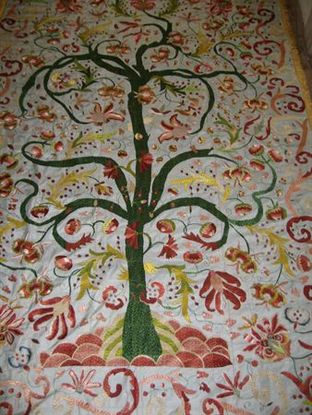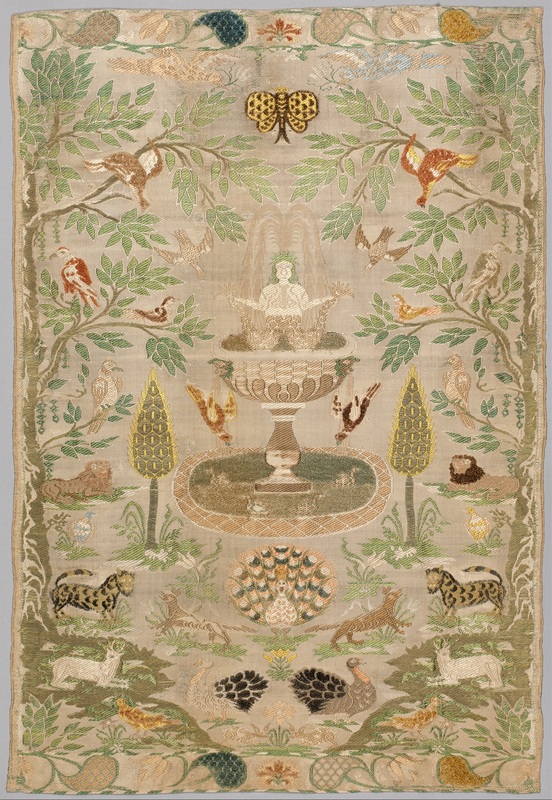Bedcover
|
Panelsilk
seventeenth to eighteenth century Portugal The Metropolitan Museum of Art This hanging is an excellent example of the interest in the abundance and variety of the natural world. Animals from all over the globe are depicted, including New World animals, such as the turkey. |
|
Copyright 2018 Rachel A. Zimmerman
|


